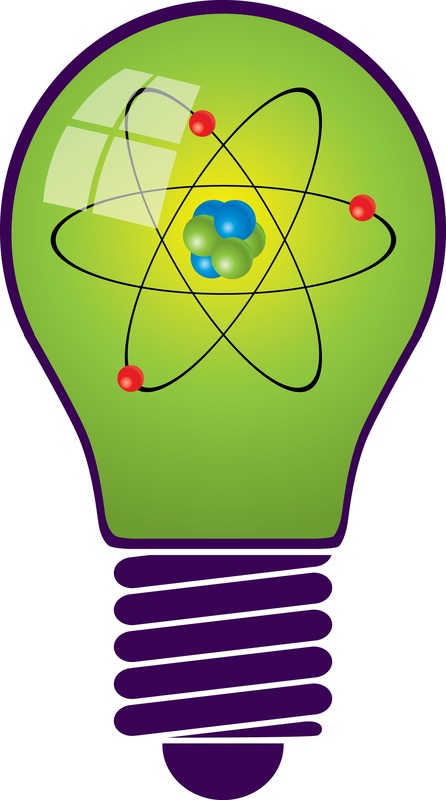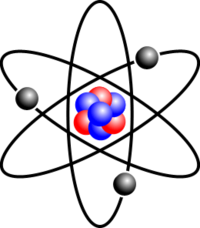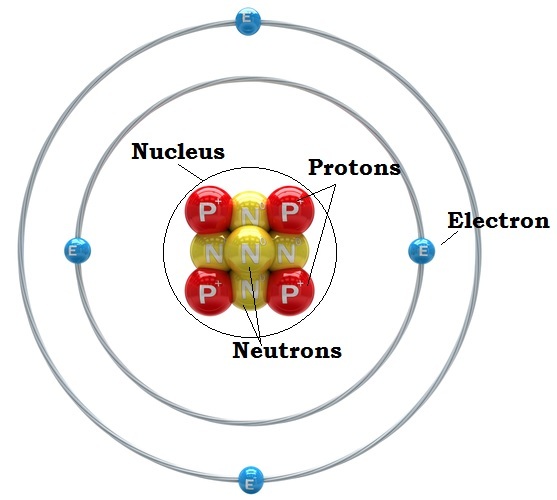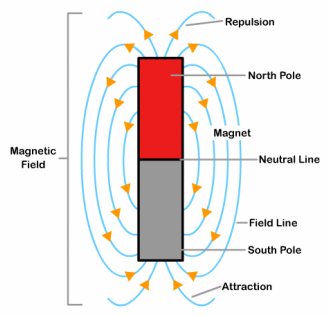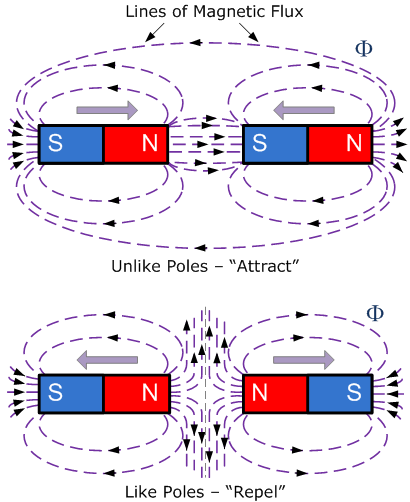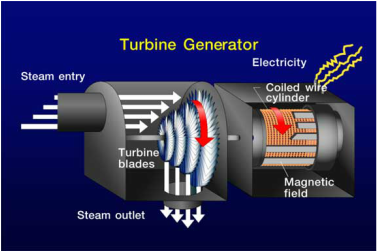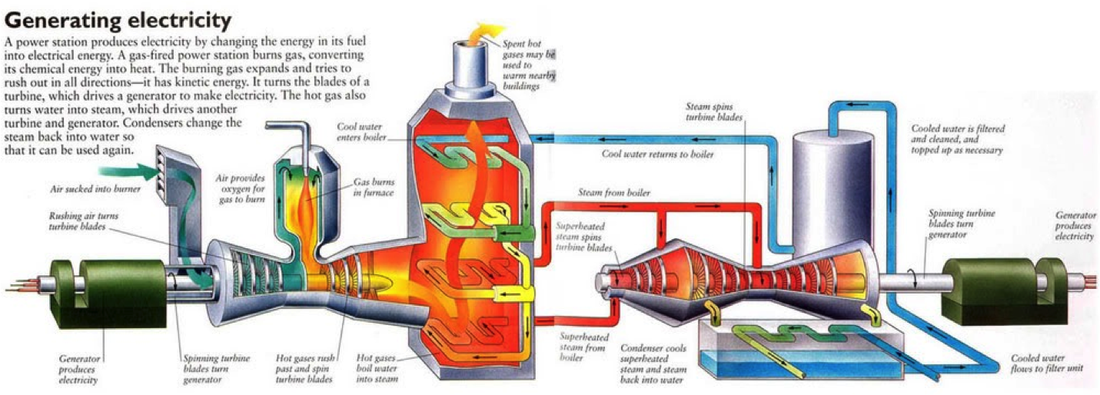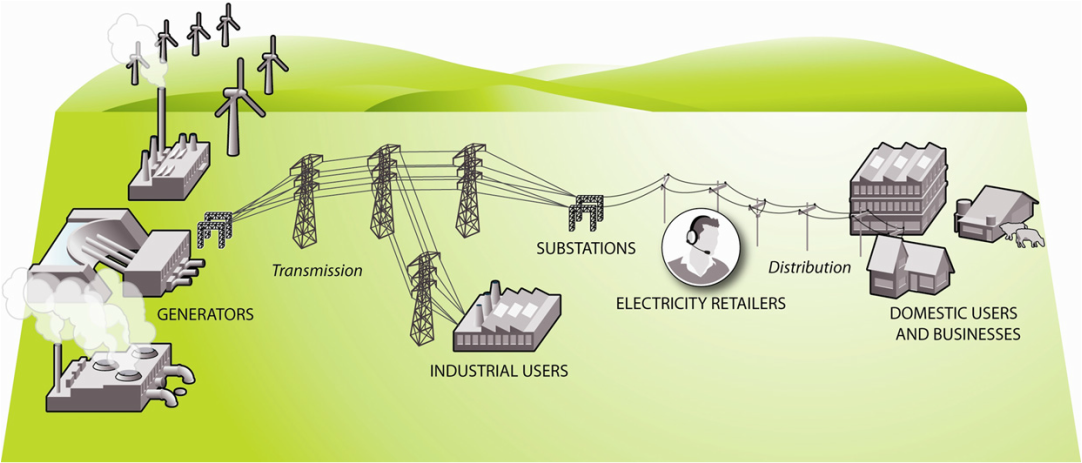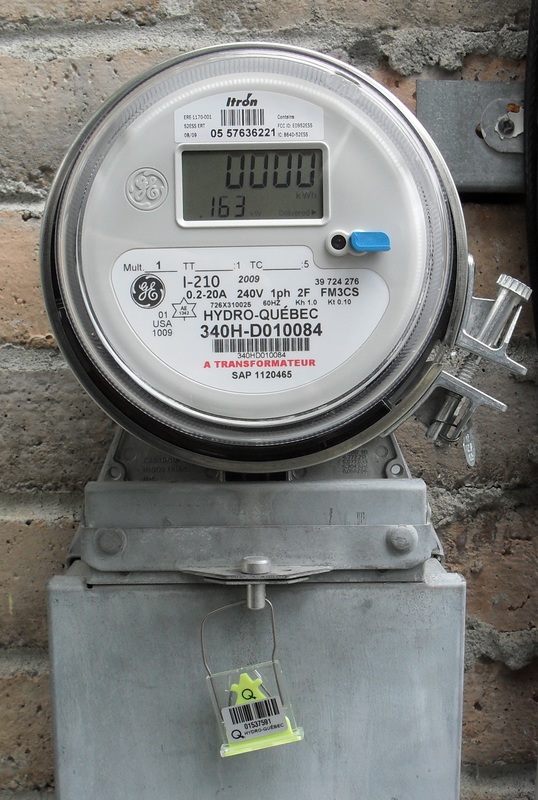Everything Is Made of Atoms
|
In order to understand electricity, we need to know something about atoms. Everything in the universe is made of atoms — every star, every tree, every animal. The human body is made of atoms. Air and water are, too. Atoms are the building blocks of the universe. Atoms are so small that millions of them would fit on the head of a pin.
|
Atoms Are Made of Even Smaller Particles
|
The center of an atom is called the nucleus. It is made of particles called protons and neutrons. The protons and neutrons are very small, but electrons are much, much smaller. Electrons spin around the nucleus in shells a great distance from the nucleus. If the nucleus were the size of a tennis ball, the atom would be the size of the Empire State Building. Atoms are mostly empty space.
If you could see an atom, it would look a little like a tiny center of balls surrounded by giant invisible bubbles (or shells). The electrons would be on the surface of the bubbles, constantly spinning and moving to stay as far away from each other as possible. Electrons are held in their shells by an electrical force. |
|
The protons and electrons of an atom are attracted to each other. They both carry an electrical charge. Protons have a positive charge (+) and electrons have a negative charge (-). The positive charge of the protons is equal to the negative charge of the electrons. Opposite charges attract each other. An atom is in balance when it has an equal number of protons and electrons. The neutrons carry no charge and their number can vary.
The number of protons in an atom determines the kind of atom, or element, it is. An element is a substance consisting of one type of atom (the Periodic Table shows all the known elements), all with the same number of protons. Every atom of hydrogen, for example, has one proton, and every atom of carbon has six protons. The number of protons determines which element it is. |
Electricity Is the Movement of Electrons Between Atoms
Electrons usually remain a constant distance from the nucleus in precise shells. The shell closest to the nucleus can hold two electrons. The next shell can hold up to eight. The outer shells can hold even more. Some atoms with many protons can have as many as seven shells with electrons in them.
The electrons in the shells closest to the nucleus have a strong force of attraction to the protons. Sometimes, the electrons in an atom's outermost shells do not. These electrons can be pushed out of their orbits. Applying a force can make them move from one atom to another. These moving electrons are electricity.
The electrons in the shells closest to the nucleus have a strong force of attraction to the protons. Sometimes, the electrons in an atom's outermost shells do not. These electrons can be pushed out of their orbits. Applying a force can make them move from one atom to another. These moving electrons are electricity.
Static Electricity Exists in Nature
Lightning is a form of electricity. It is electrons moving from one cloud to another or jumping from a cloud to the ground. Have you ever felt a shock when you touched an object after walking across a carpet? A stream of electrons jumped to you from that object. This is called static electricity.
Have you ever made your hair stand straight up by rubbing a balloon on it? If so, you rubbed some electrons off the balloon. The electrons moved into your hair from the balloon. They tried to get far away from each other by moving to the ends of your hair. They pushed against each other and made your hair move — they repelled each other. Just as opposite charges attract each other, like charges repel each other.
Have you ever made your hair stand straight up by rubbing a balloon on it? If so, you rubbed some electrons off the balloon. The electrons moved into your hair from the balloon. They tried to get far away from each other by moving to the ends of your hair. They pushed against each other and made your hair move — they repelled each other. Just as opposite charges attract each other, like charges repel each other.
Magnets and Electricity
|
The spinning of the electrons around the nucleus of an atom creates a tiny magnetic field. Most objects are not magnetic because their electrons spin in different, random directions, and cancel out each other.
Magnets are different; the molecules in magnets are arranged so that their electrons spin in the same direction. This arrangement of atoms creates two poles in a magnet, a North-seeking pole and a South-seeking pole. |
Magnets Have Magnetic Fields
|
The magnetic force in a magnet flows from the North pole to the South pole. This creates a magnetic field around a magnet.
Have you ever held two magnets close to each other? They don't act like most objects. If you try to push the South poles together, they repel each other. Two North poles also repel each other. Turn one magnet around, and the North (N) and the South (S) poles are attracted to each other. Just like protons and electrons — opposites attract. |
Magnetic Fields Can Be Used To Make Electricity
Properties of magnets can be used to make electricity. Moving magnetic fields can pull and push electrons. Metals such as copper have electrons that are loosely held. So electrons in copper wires can easily be pushed from their shells by moving magnets.
By using moving magnets and copper wire together, electric generators create electricity. Electric generators essentially convert kinetic energy (the energy of motion) into electrical energy.
By using moving magnets and copper wire together, electric generators create electricity. Electric generators essentially convert kinetic energy (the energy of motion) into electrical energy.
How Electricity Is Generated
|
A generator is a device that converts mechanical energy into electrical energy. The process is based on the relationship between magnetism and electricity. In 1831, scientist Michael Faraday discovered that when a magnet is moved inside a coil of wire, electrical current flows in the wire.
A typical generator at a power plant uses an electromagnet — a magnet produced by electricity — not a traditional magnet. The generator has a series of insulated coils of wire that form a stationary cylinder. This cylinder surrounds a rotary electromagnetic shaft. When the electromagnetic shaft rotates, it induces a small electric current in each section of the wire coil. Each section of the wire becomes a small, separate electric conductor. The small currents of individual sections are added together to form one large current. This current is the electric power that is transmitted from the power company to the consumer. |
An electric utility power station uses either a turbine, engine, water wheel, or other similar machine to drive an electric generator — a device that converts mechanical or chemical energy to electricity. Steam turbines, internal-combustion engines, gas combustion turbines, water turbines, and wind turbines are the most common methods to generate electricity.
Steam turbine power plants powered by coal and nuclear energy produce about 70% of the electricity used in the United States. These plants are about 35% efficient. That means that for every 100 units of primary heat energy that go into a plant, only 35 units are converted to useable electrical energy.
Steam turbine power plants powered by coal and nuclear energy produce about 70% of the electricity used in the United States. These plants are about 35% efficient. That means that for every 100 units of primary heat energy that go into a plant, only 35 units are converted to useable electrical energy.
How Electricity is Delivered
- Electricity is made at a power plant by huge generators. Most power plants use coal, but some use natural gas, water or even wind.
- The current is sent through transformers to increase the voltage to push the power long distances.
- The electrical charge goes through high-voltage transmission lines that stretch across the country.
- It reaches a substation, where the voltage is lowered so it can be sent on smaller power lines.
- It travels through distribution lines to your neighborhood, where smaller pole-top transformers reduce the voltage again to take the power safe to use in our homes and businesses.
- It connects to a home or business through the service drop and passes through a meter that measures how much electricity is being used.
- The electricity goes to the service panel in a home or business, where breakers or fuses protect the wires inside a house or a business from being overloaded.
- The electricity travels through wires inside the walls to the outlets and switches all over a house or a business.
How Electricity Is Measured
|
Electricity is measured in units of power called watts and kilowatts. It was named to honor James Watt, the inventor of the steam engine. One watt is a very small amount of power. It would require nearly 750 watts to equal one horsepower.
A kilowatt is the same as 1,000 watts. Electricity Use Over Time Is Measured in Kilowatthours A kilowatthour (kWh) is equal to the energy of 1,000 watts working for one hour. The amount of electricity a power plant generates or a customer uses over a period of time is measured in kilowatthours (kWh). Kilowatthours are determined by multiplying the number of kilowatts required by the number of hours of use. For example, if you use a 40-watt light bulb for 5 hours, you have used 200 watt-hours, or 0.2 kilowatthours, of electrical energy. |

